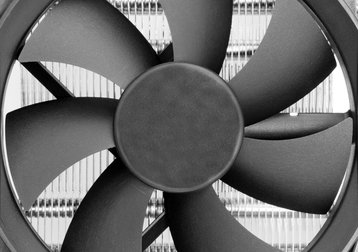My previous opinion piece on the use of CFD in the data center space has produced much discussion, although, unfortunately, mainly in private instead of in the public domain. I make no apology but will admit that my purpose is always to challenge the status-quo to test its resilience but, if a few hundred words of ‘opinion’ (not DCD’s) can cause such upset there must be ‘something’ that needs discussing and exploring further.
The title above is pinched from Henry Ford – ‘If you always do what you’ve always done, you get what you’ve always got’ and it appears clear to me that a single full load simulation is useless for design because that’s never how a data center operates today. It is also now clear to me that I must have only been exposed to poor CFD modeling (either due to a simplified tool, poor input data or inexperienced modeller, and probably all three) and that there is a world of difference between the best CFD and the worst.
So, to clarify my original position (and before I consider the comments made in private) I probably need to reinforce:
- CFD is a precision mathematical tool that, given the right care and attention in application and input conditions, provides a precision result. Many products, including fans, CRACs, servers etc, could not be economically produced without it.
- It can be used to great effect to ‘prove’, beyond any doubt, that aisle containment, blanking plates and hole stopping – if implemented and managed well - decreases energy losses and eliminates hot-spots.
- In dense, high utilization, hyper-scale applications such as HPC, search or social networking (or anywhere that hardware operates at constant rates – i.e. everything is known) it can produce a near perfect representation of the air-flow in the whole facility.
- When the load idled at near full power and the fans were fixed speed, CFD worked more than adequately but those days are long gone. The application of variable speed server fans certainly results in the conclusion that a one-off design simulation is not enough.
- It can be used with great success to model and solve air-flow distribution problems under floors such as turning vanes, obstructions and chimney/return-plenums etc.
- In existing facilities, it can be used to solve air-flow problems if the input data comes from a detailed and comprehensive survey of the air-flow that has been obtained in a live ICT state.
What I did take on the chin is the point that was made that CFD is ‘like capitalism, not perfect but better than anything else’. Thanks to my voice-of-reason, Chris Johnston, for that pearl of wisdom.
However, there was one point made in private which I did not agree with and that was the suggestion that the ‘puny’ server fans don’t make sufficient impact on the systems’ air-flow. I took it that behind that statement lies the assumption that the flow from the CRACs/CRAHs push the air through the servers independently of the server’s demand for cooling. Is that a widely held belief? If so I am reminded of the interesting white paper from Tate (published, I think, 3-4 years ago?) that gave proof that the a high proportion of ‘leakage’ was actually through the servers themselves and over-pressuring the servers is undesirable – they are not one-way valves.
So, taking on board those private comments, I can now add to (and I would be happy to use the word ‘correct’) my previous piece:
- Not all CFD vendors are equal and some tools have more capabilities than others.
- The difference seems to be more routed in the application of the tool and the accuracy of the input data than to the resolution of the tool and result. There also seems to be a strong link between the experience of the modeler and the CFD result.
- Aisle-containment is a no-brainer but, then, EC/VSD fans with ‘just enough’ airflow capacity at any given ICT demand are essential – something that CFD can demonstrate if the model includes the leakage through the servers and elsewhere.
- I appeared to have suggested that I wanted a ‘live’ result based on the way that the individual servers where ramping their fans up/down. One commentator challenged ‘why’ I would want do that that and, whilst I stand by the belief that in collocation et al the load utilization is low and variable, I do see that it is not what I meant. My point is that you will need more instances of CFD modeling based on different load conditions, not one catch-all.
- There appears to be a huge barrier in perfecting the use of CFD as a tool in new facilities and that is that data is very inadequate from the server OEMs as to the flow rate and pressure drop – both static at a fixed temperature but also dynamic against variable inlet temperature. While there are many configurations and operating modes for any IT, the designer needs to understand the variability and behavior.
So, in conclusion, I am left with the feeling that it is essential to choose your CFD modeler carefully. They need to have a high precision CFD tool, actual data or multiple sets of design conditions and be experienced in the application of the tool. If you don’t manage to achieve these criteria then you will get a model that does not properly represent your facility.



